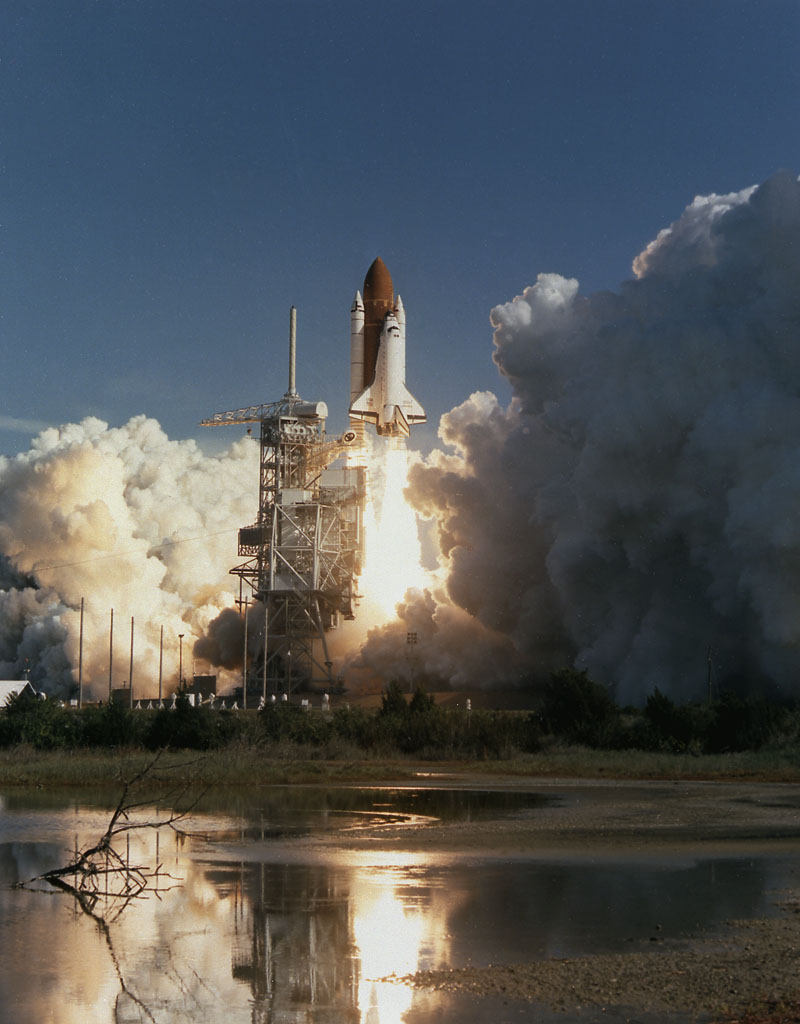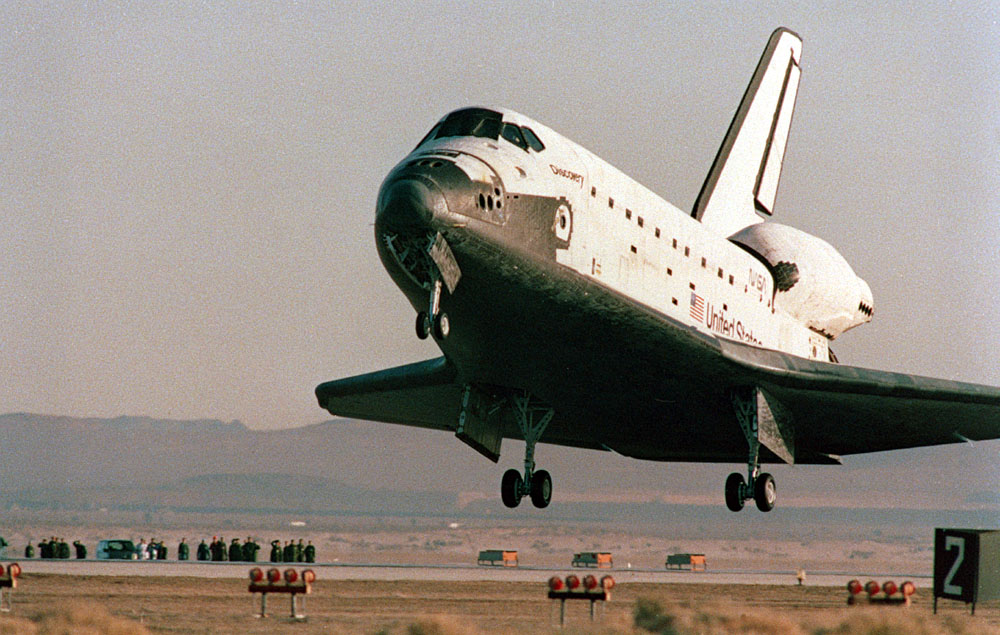
This week in rocket history, we present STS-42, a space shuttle mission full of cool science and the flight of the first Canadian woman in space.
STS-42, also called International Microgravity Laboratory 1, launched on January 22, 1992, with shuttle Discovery launching from pad 39A in the morning. STS-42 was Discovery’s fourteenth flight into space. It was delayed an hour off of its original time because of the weather.
The main purpose of the STS-42 mission was not to dock with a station or deploy a satellite but to do microgravity science using the Spacelab, a pressurized module carried in the shuttle’s payload bay. Spacelab provided more room for doing science in the relatively cramped shuttle. Spacelab was built by ESA in exchange for flying member state astronauts on the shuttle. STS-42 included two such astronauts in its seven-member crew: Ulf Merbold, the second German in space, and Roberta Bondar, the first Canadian woman.
Once in orbit, the crew split into two teams, Red and Blue, so that they could do science 24/7 during the relatively short eight-day mission. The shuttle stabilized itself on-orbit using the gravity gradient method instead of reaction wheels or thrusters, to provide the best environment for the microgravity research. The principal focus of the research was “the human nervous system’s adaptation to low gravity and the effects of low gravity on other lifeforms”. These other lifeforms included shrimp and fruit fly eggs.
Astronauts also conducted two experiments from high school students.
Because the Shuttle was in low-Earth orbit, the scientists in charge of the various experiments were just a voice or video call away and able to answer questions from the astronauts about how to do the experiment properly during the mission. The astronauts got months of mission-specific training before launch, but microgravity always complicates things.
One of the more interesting experiments involved seeing how developing frog embryos would change in microgravity. Specifically, they were looking for if the place the egg was fertilized would affect the orientation of the developing animal. In gravity, the fertilization point always became the front of the animal. Astronauts fertilized the eggs in space. The control and experiment samples were both done in space thanks to a centrifuge in the Spacelab module that provided approximately Earth gravity.

After the flight, the two samples were compared, and the scientists concluded that gravity was not necessary for the formation of the dorsal and ventral axes in embryo development and that the tadpoles’ development was otherwise normal. However, the scientists weren’t able to determine conclusively if the fertilization point alone determined the symmetry in microgravity.
Discovery also carried several secondary payloads, “Get Away Specials” (GAS), in the payload bay ahead of the Spacelab module. Ten of these canisters were on STS-42, including the first GAS payload from China. Another of the experiments was an ultraviolet telescope from an Australian company.
In addition to experiments, the astronauts also filmed their activities with a big IMAX 70-mm film camera for the movie Destiny in Space which was released in 1994. The film also featured footage from many more shuttle missions beyond STS-42.
Seven days into the mission, the astronauts packed up all the science and prepared the orbiter for return to Earth on flight day eight. The landing was accomplished at Edwards Air Force Base in California because the runway at KSC could not support the heavier landing weight of the shuttle returning with a Spacelab in the payload bay.
After landing, Discovery was flown back to Florida on the 747 shuttle carrier aircraft for a significant maintenance and upgrade period which would prepare it for missions to the International Space Station. It would go on to fly 25 more times before its retirement in 2011, the most of any Orbiter vehicle.
More Information
STS-42 mission archive (NASA)
STS-42 press kit (NASA)
“The Role of Gravity in the Establishment of the Dorso-Ventral Axis in the Amphibian Embryo,” G.A. Ubbels, M. Reijnen, J. Meijerink, and J. Narraway, 1995 March, Biorack on Spacelab IML-1




 Join the Crew!
Join the Crew!
 Escape Velocity Space News
Escape Velocity Space News
0 Comments